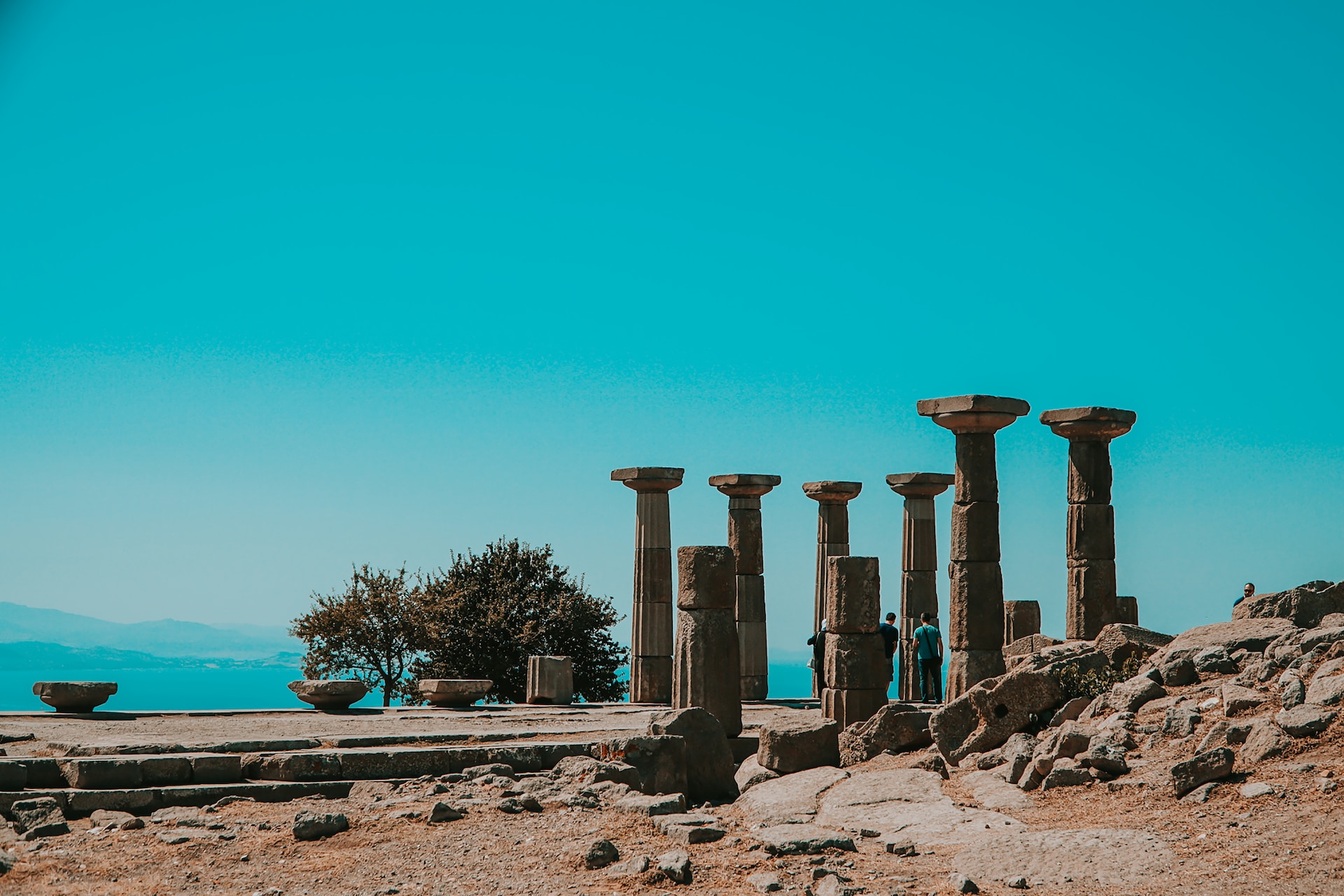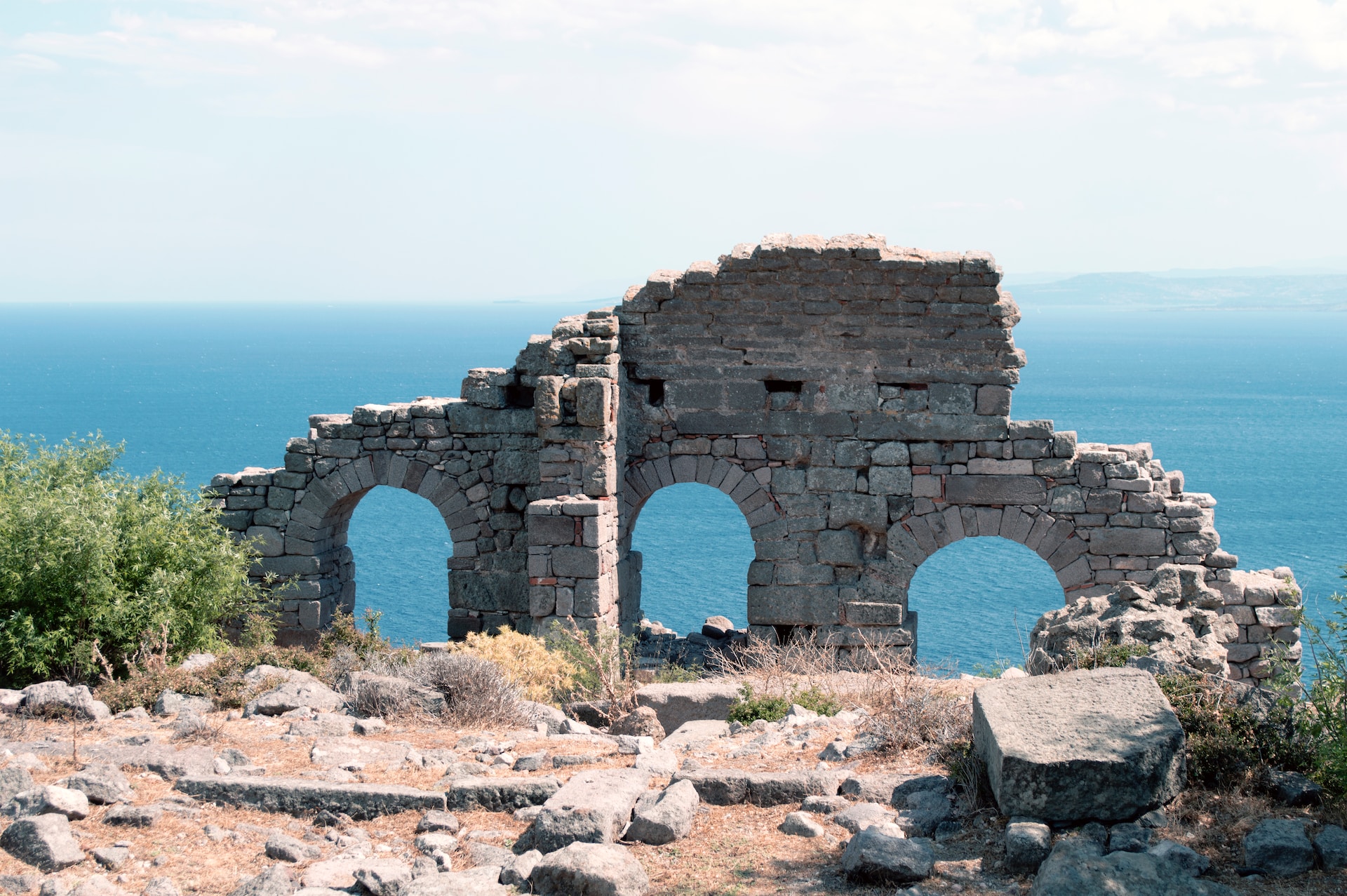Culture & Travel
27 June 2023Nestled in the picturesque Aegean Region of Türkiye, specifically in the province of Çanakkale, the Ancient City of Troy and Assos are absolute must-see destinations for history buffs and archaeology enthusiasts. These two ancient cities offer an enchanting blend of historical significance and natural splendor, transporting visitors back in time while showcasing the wonders of the present.
Embarking on the Trail of the Legendary Past: Troy
Troy, or as some like to call it, Ilion, stands as an ancient city steeped in legend, holding its roots in one of Homer's renowned epics, "The Iliad." This UNESCO World Heritage Site has a rich tapestry of ongoing excavations, continuously unraveling the mysteries concealed within its ancient walls. With a history that traces back to the 5th millennium BC, Troy has witnessed a staggering nine cycles of destruction and reconstruction throughout its existence. The Archaeological Site of Troy has garnered global acclaim for its 4,000-year narrative, and it owes its initial exploration to the illustrious archaeologist Heinrich Schliemann in 1870.

From a scientific perspective, the extensive remains of Troy stand as vital testament to the deep interplay between Anatolian civilizations and the Mediterranean world. Notably, the epic events of the 13th or 12th century BC, in which Spartan and Achaean warriors from Greece unleashed their might upon Troy, as immortalized by Homer in his timeless work "Iliad," continue to inspire artists across the globe. The Archaeological Site of Troy serves as a testament to the progressive development of the Mediterranean world and its intriguing interactions with Anatolian civilizations.
Through over a century of meticulous excavations, scholars have established a solid chronology, shedding light on this pivotal era in the Old World's cultural evolution. Moreover, the renowned siege of Troy by Mycenaean warriors from Greece during the 13th century BC, vividly recounted in Homer's epic "Iliad," has left an indelible mark on artistic expressions throughout history.
Situated approximately 4.8 kilometers from the southern entrance of the Dardanelles, atop the majestic hill of Hisarlık, Troy enjoys a splendid location along Türkiye's alluring Aegean coast. Back in 1870, the enterprising archaeologist Heinrich Schliemann spearheaded the primary excavations in the region, which marked a significant turning point in capturing public interest in archaeology.
Fascinating research and extensive excavations in the Troy and Troas region have unveiled an unbroken habitation spanning a remarkable 8,000 years. Troy has played a pivotal role as a cultural bridge, connecting the Troad region with the Balkans, Anatolia, the Aegean, and Black Sea regions through a myriad of migrations, invasions, and vibrant trade, fostering remarkable cultural interactions throughout the centuries. With no less than 24 excavations spanning over 140 years, a multitude of captivating features from various settlement periods have been unearthed, granting us a glimpse into the captivating world of both the citadel and the lower city.

These areas encompass a fascinating array of historical remnants, including 23 sections of defensive walls, eleven gates, a stone-paved ramp, and the lower portions of five defensive towers. Over the past 15 years, the discovery of a Lower City south of the mound has shed light on prehistoric times and revealed occupation during the Late Bronze Age, spanning an impressive area of approximately 30 hectares.
Moreover, the site of Troy is home to various monuments that belong to the Greek and Roman city of Ilion. Notably, a recently unearthed sanctuary adds to the allure of this ancient location. The Roman influence is evident in the urban layout, characterized by two prominent public structures situated at the entrance to the agora, the central marketplace. These include the Odeon, a concert hall, and the bouleuterion, an adjacent assembly hall.
The surrounding landscape is replete with numerous archaeological and historical sites of great importance. These encompass prehistoric settlements and burial grounds, Hellenistic mounds, majestic tumuli, Greek and Roman settlements, Roman and Ottoman bridges, and diverse monuments from the Dardanelles War, collectively forming a rich tapestry of history.
Assos: Hidden Gem of the Aegean
Situated within the Çanakkale province, Assos is an ancient site renowned for its captivating charm. Dating back to the 6th century BC, Assos stands out for its remarkable sarcophagi. The city boasts the sole surviving Doric-style building in Anatolia and sits atop a magnificent hill, which served as the abode of the renowned philosopher Aristotle for an extended period. Visitors can explore archaeological finds displayed in the museum at the ruins, as well as in the highly popular Çanakkale Museum in Turkey.

The town of Assos captivates with its distinctive architectural layout, seamlessly blending with the surrounding natural environment. The acropolis, perched on steep rock walls, holds a prominent position within the city, serving as an awe-inspiring landmark. Adjacent to the acropolis is the Temple of Athena, an impressive structure visible even from afar when approaching the city from the sea. Built upon the cliffs of the acropolis, the Temple of Athena occupies a solitary location, soaring to the highest point and offering breathtaking panoramic vistas that remain as captivating today as they were in ancient times. The ornate architectural remnants of the temple are now preserved in museums located in Paris, Boston, Istanbul, and Çanakkale.
Assos was established during the 1st millennium BC by inhabitants from the nearby island of Lesbos. The city experienced a period of prosperity in the 4th century BC under the rule of Hermeias, a disciple of Plato, who shaped Assos while being influenced by the broader Troad peninsula. Aristotle, the famed philosopher, arrived in Assos in 348 BC and established a school of philosophy, where he taught for three years.

In 334 BC, Alexander, a student of Aristotle, triumphed over the Persians, and it is believed that his successor assumed leadership in Assos, earning acclaim for his generosity. From 241 to 133 BC, the Kingdom of Pergamum reigned over Assos until it became definitively incorporated into the Roman Empire. During his third missionary journey, Saint Paul, upon returning to Jerusalem in 55 AD, traversed from Alexandria Troas to Assos alone, where he reunited with his colleagues before setting sail for Lesbos.


